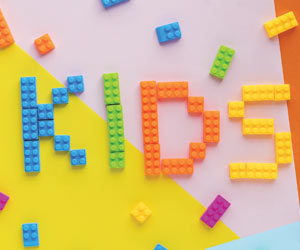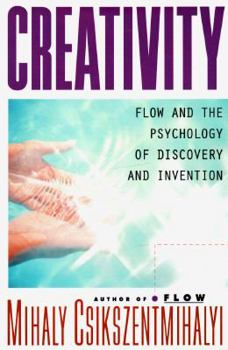Creativity: The Work and Lives of 91 Eminent People
Select Format
Select Condition 
Book Overview
The classic study of the creative process from the bestselling author of FlowCreativity is about capturing those moments that make life worth living. Legendary psychologist Mihaly Csikszentmihalyi... This description may be from another edition of this product.
Format:Hardcover
Language:English
ISBN:0060171332
ISBN13:9780060171339
Release Date:January 1996
Publisher:HarperCollins Publishers
Length:456 Pages
Weight:1.57 lbs.
Dimensions:1.4" x 9.6" x 6.5"
Customer Reviews
5 ratings
The Real Facts About Creative People
Published by Thriftbooks.com User , 18 years ago
Few activities are a misunderstood by the general public as inventing and creativity. Sadly, Hollywood and television often portray the great inventor, scientist or musician as some sort of "mad genius". This book seeks to put the study of creativity on a rational basis. For the purposes of this book, creativity is defined as "... to bring into existence something genuinely new that is valued enough to be added to the culture". Ninety-one noted contemporary people have been systematically interviewed. While only two -- Jacob Rabinow and Frank Offner -- are full-blown inventors, their creative processes have a fascinating similarity to the composers, architects, astronomers, biologists and others interviewed. The book does not just quote the people interviewed, but cites their views regarding various facets of the creativity process. Jacob Rabinow (200 patents in diverse areas) believes most original thinkers share three common traits -- 1) their curiosity, from early childhood, results in acquiring a great deal of information, 2) they enjoy thinking up and combining ideas, and 3) they recognize their "good" ideas and don't hesitate to discard "junk" ideas. Frank Offner (first electronic controls for jet engines and developer of the only successful heat-homing missiles in World War II) notes that while a "solid grounding in physical sciences" is an asset, knowledge from other fields may trigger a creative person's mind to override what is assumed to be true in one field. He also feels the love or joy of solving problems is a key to finding solutions. This fun aspect is so strong that Rabinow is quoted as saying that, given a choice between money-making and fun, he would go for the fun. Creative people are sometimes thought to be arrogant. However, this often stems from the need for self-assurance or, simply, overriding modesty. As Rabinow notes, "... I always assume that not only it can be done, but I can do it". Robert Galvin (head of Motorola for 30 years) is reported as saying two traits are essential: 1) anticipation, i.e., having a vision of the future, and 2) commitment, which keeps you going when you or others have doubts. He also practices a mental exercise worth considering -- flip the problem by asking, "What if the opposite were true?". Freeman Dyson, the physicist, observes, "... it is easy when you have a problem to work on. The hardest part is finding your problem". The book cites how being in the right place at the right time contributes to being recognized. In Florence, Italy, between 1401 and 1425, an explosion of creativity took place. For example, for eighty years the cathedral of Florence lacked a dome, and yet the Pantheon of Rome had a dome (142 feet in diameter!) for a thousand years. Suddenly, Brunelleschi, who had analyzed the structure of the Pantheon, applied it to the problem at hand. The social, economic and political factors that made Florence the "right place at the right time" are detailed in the boo
Demystifying Creativity
Published by Thriftbooks.com User , 21 years ago
AN INTERESTING, IMPORTANT SUBJECTWhen you think about it, creativity is a key driver for personal fulfillment and world events- yet most people's understanding consists merely of stereotypes, assumptions, and clichés. There is a lot to know about creativity: what it is (and how it differs from talent and brilliance), conditions that encourage its emergence, creative people's complex personality traits, and what a creative experience looks and feels like. I would not rate `Creativity' as high as Csikszentmihalyi's `Flow'- which is an even more important concept to understand- yet it is certainly an informative, well-written, and recommended book. BOOK IN A NUTSHELLResearch in psychology has traditionally learned about healthy individuals by focusing on pathological cases; this study examines the other end of the continuum- looking at extraordinary people to find out what might be missing from our lives. Trends in the personal histories and habits are taken from interviews with 91 leading contributors (Noble Prize winners, world renown artists, etc.) who have created or dominated their fields. Mainstream creative people (e.g. most creative person in an office or community) and uncreative people are not really discussed in the book- although the insights gained from the interviews may be applicable. Part 3 was not as strong as the rest of the book: the in-depth illustrations of the creative process were somewhat redundant, and some sections (Ch. 12 & 13) seemed to drift into assumptions of political philosophies.
"Creativity" was an important resource for understanding.
Published by Thriftbooks.com User , 23 years ago
"Creativity" provided an outstanding analysis of how Creativity occurs, and how creative individuals have influenced their respective fields and domains of knowledge and arts through the analysis of over ninety creative individuals of note. This book provides an outline of the process that is useful to any person who is attempting to enhance organizational or personal creativity, and details the components of Creativity (which can influence the overall culture) and creativity (for an individual.) I read my copy twice, and found certain topics so useful, I violated my own rule of never marking in a book. This book is now heavily annotated and underlined, and has been shared with friends. Following is a very brief summary.The components of creativity include domains, fields, and persons. A domain is defined as, "a set of symbolic rules and procedures," such as mathematics. A field "includes all the individuals who act as gatekeepers to the domain." This can be summarized as, "Creativity occurs when a person, using the symbols of a given domain such as music, engineering, business, or mathematics, has a new idea or sees a new pattern, and when this novelty is selected by the appropriate field for inclusion into the relevant domain."The book presents an analysis of the impact of creativity by taking a systems approach with the following major components: Creative individuals, through understanding of their field, hard work, and inspiration can produce novel work. This work may or may not impact the overall field and domain, depending upon a variety of interrelated factors. For instance, a talented but relatively unknown painter in a rural area may have less chance of recognition by the field than the same painter living in Manhattan, in proximity to galleries and noted critics. Recognition and acceptance by the field is necessary for contribution to the field and domain. (such as physics, or art). The book has an excellent, though smaller, section on enhancing personal creativity. To those who seek to be more creative, a series of suggestions on how to implement these suggestions into everyday life is presented, with the note; "Even though personal creativity may not lead to fame and fortune, it can do something that from the individual's point of view is even more important: make day-to-day experiences more vivid, more enjoyable, more rewarding. When we live creatively, boredom is banished and every moment holds the promise of a fresh discovery."The exercise of these elements of personal creativity can be delightful. Some of them are:"Try to surprise at least one person every day.""Try to be surprised by something every day.""When something strikes a spark of interest, follow it.""If you do anything well, it becomes enjoyable."For the rest, you will just have to buy the book.
Absolutely Fabulous!
Published by Thriftbooks.com User , 23 years ago
An absolutely incredible book! Mr. Mihaly has compiled an amazing work on creativity, profiles of creative people, how creativity comes about (or doesn't) in certain people or domains, as well as common characteristics of successful creative people.As the saying goes, if a tree falls in the woods, and nobody is around to hear it, does it really make a noise? If a person is brilliantly smart or creative but they do not make the right connections, or the opportunities are not there in a particular domain for contributions to be made, does it really matter? Will the person achieve anywhere near their potential? Probably not. This book is no road map to achieve success or fulfillment in ones life or career. It does however illustrate many factors (that if in place) may help immensely in reaching ones goals. When embarking on, or pursuing a new career this is a must read for insight as to what environmental factors may facilitate success and achievement in a chosen creative pursuit.
It's a pretty thorough coverage on that topic
Published by Thriftbooks.com User , 26 years ago
Found this book very useful and ordering another copy for my daughter who is in architecture. As for me, I am a computer science professor. The good thing about the coverage is its realism where the individual creativity is not the whole story. The social context in terms of domain and field is espccially important since it is not always up to the individual to be recognized as "creative." in a certain field. The social context as the ultimate arbiter of who is creative and who is not is an important one especially in our promo peer-review survey-count oriented times..
Creativity: Flow and the Psychology of Discovery and Invention Mentions in Our Blog

Kids Will Be Kids...Unless They Are Kidventors
Published by Beth Clark • January 17, 2019
Refrigerator art and experimental LEGO cars are proof kids have vivid imaginations, but sometimes they have ideas for ingenious things that change the world, like popsicles (age 11), the trampoline (age 16), swim flippers (age 11), and earmuffs (age 15). What would you do if your kidventor came up with a mind-bending invention that was actually viable? The parents of the kids below all answered, "Patent it, build it, and/or sell it!"






